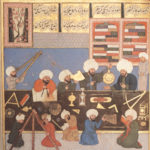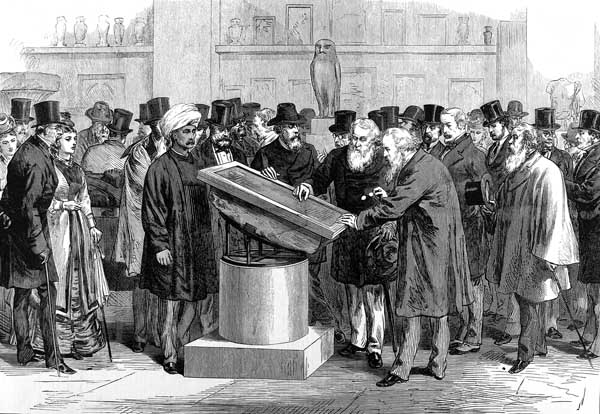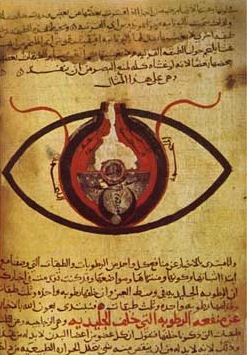
One has to make a distinction between religion as a collection of sacred texts and religious thought which aims to make use of these texts in social and intellectual applications. If one fails to make this distinction religiously defined sanctity risks overspilling onto broader arenas that embrace the religious thinker himself, his writings and his teachings. It ends up with the process becoming chronologically programmatic, and the chain of sanctity accumulating and expanding. Differences among sanctified thinkers leads to divergent sanctified schools of thought, with each school bearing its own new and independent religious stamp.
THIS IS WHERE holy wars make their appearance: each protagonist makes the claim to being the single representative of the faith. And again, lack of a distinction leads to overstepping the sanctified, textual borderlines onto more and more degrees of interdiction, prohibition and accusations of Disbelief so that freedoms come to be progressively squeezed.
There is, moreover, a large, broad difference between religion with its fixed, sanctified texts and religious ideas that are subject to change according to time and place and from one thinker to another. Knowledge is one of those aspects sensitive to social ideologization and thus religious thought has a major and crucial influence upon it. The singularity of knowledge is presented in different ways, generally without a specific definition in the Qur’ānic text. During the period of the scientific resurgence or ‘awakening’ following the rise of Islam[1] this generalness led to all spheres of knowledge being considered as drawn from within the framework of Qur’ānic science, and thence to the flourishing of the process of knowledge transmission among diverse peoples and its growth in Arab Islamic culture. Thus we see the flourishing of the treatment of sciences such as chemistry, mechanics, mathematics, biology and astronomy … in addition to the religious and philological sciences. This was during the period of the rise and floruit of the Mu‘tazila school between the eighth and eleventh centuries broadly speaking.
Arab Islamic scientific achievement was forgotten, until its rediscovery by Orientalists
The natural sciences depend upon a number of factors, including logical analysis and the freedom to treat with, propose and discuss ideas and circulate results. There is no doubt that the Mu‘tazila furnished these factors for its society at that time. The practice of all these sciences took place within a relatively open religious environment that contributed to the emergence of this phenomenon unfamiliar to the Arab societies. There was no precedent in such societies for working with science, in that as far as is known of this culture it was an oral, philologically inclined culture rather than one of logic and contemplation. Translation played a huge role in contracting the time factor and in accelerating the accumulation of scientific knowledge. Mu‘tazilī thought bequeathed a conspicuous scientific awakening and a highly developed intellectual and cultural production if measured by the standard of its time. That awakening cannot be separated from the Islamic framework in which it grew thanks to Mu‘tazilī thought.
After the collapse of the Mu‘tazila and the suppression of its thought from the beginning of the era of the Abbassid Caliph al-Mutawakkil (821-861 AD), scientific interest progressively waned. Society at the time continued to function in a religious frame, but what now occurred was the emergence of another mentality which treated the sacred text in a different way and largely rejected intellectual logic. This led to a wholesale collapse which Arab Islamic societies are still living through today. Many scholars have studied the two phases of scientific development in Arab Islamic society – the phases of development and regression. They came to focus on the thought of al-Ghazali (1058-1111)[2] for its being considered the basic cause of scientific regression. From my own statistical study I show clearly the two distinct periods, and I ascribe the sustained scientific regression to intellectual obscurity and the lack of intellectual freedom.[3] What is clear is that scientific regression endured for several hundred years, right up to the 20th century. Writers such as the American author Robert Reilly have come to the same conclusion.[4]
The halt of the scientific genius is the nearest one can get to cultural extinction
In any case Arab Islamic scientific achievement was smothered for several centuries and entirely forgotten, until its rediscovery by Orientalists. Western academies prior to the Age of Enlightenment (in the 18th century) were interested in the Greek and Roman cultures, but subsequently western interest directed itself towards the East and interest in Arab Islamic and Chinese cultures grew accordingly. Orientalism as a discipline began towards the end of the 19th century and the East came to constitute a rich subject of study for the humanities, carried out according to the new scientific methodology, and it has developed over time. Research studies on the intellectual foundations of thought and of its principles uncovered many Arab scientific roots to it, roots whose source was even unknown to the Arabs themselves, let alone the West.

Suggested Reading
The Natural Sciences – Between Religion and Religious Thought (Part 2)
For example, the Arab scholar Al-Hasan ibn al-Haythem (965-1039) was one of the most important Arab scientists of the Middle Ages. After his death the Arabs remained unaware of any developments of his scientific work and lost contact with his research. Yet we find a reference to him in the writings of the philosopher Roger Bacon (ob. 1294) where he calls him ‘Alhazen.’ This was about 255 years after his death. Following the emergence in the West of the science of Optics, as a specialist branch of modern physics, western scientists re-discovered the contribution of Al-Hasan ibn al-Haythem. George Sarton, author of Introduction to the History of Science, writes this about him:
Ibn al-Haytham was not only the greatest Muslim physicist, but by all means the greatest of mediaeval times.[5]
Al-Hasan ibn al-Haythem disappeared from Arab and Muslim history for several centuries during a period of regression and remained unknown to them as an eminent scientist of optics right up to the 20th century. Before this time the Arabs and Muslims were simply not qualified to discover their own scientific history other than what was passed down to them in unsubstantiated tales.
It may be that one does not need Mu‘tazilite thought to demonstrate its standpoint on science, since what it left behind in the period of the awakening best illustrates this position. After the collapse of Mu‘tazili thought natural sciences were the first and most important victims of that collapse.
Contemporary Islamic thought attempts to approach science through studying the achievement of contemporary science between the folds of the Qur’ān, which it calls the ‘scientific miracle.’ It extols the scholars of the awakening and considers them to be a pillar of support for what contemporary Muslims dub ‘Science and Faith’.
If the standpoint of religious thought on the natural sciences was how the contemporary Muslims say it was, why was there a centuries-long collapse of Arab Islamic scientific thought, without any attempt to revive it? The halt of the scientific genius for several centuries is the nearest one can get to cultural extinction.
[1] On this see another Almuslih article by M. Sanduk, Freedom and the Progress of Civilization, September 2, 2011.
[2] Glick, Thomas F. & Livesey, Steven John, Faith Wallis, Medieval Science, Technology, and Medicine: An Encyclopedia. 2005. Routledge, 194. Huff, Toby, The Rise of Early Modern Science: Islam, China, and the West. 2003, Cambridge University Press, p.114.
[3] Sanduk, M.I., (2009), ‘The Influence of Freedom on Growth of Science in Arabic-Islamic and Western Civilizations’, PhilSci-Archive, University of Pittsburgh (http://philsci-archive.pitt.edu/4766/). See also the Almuslih article: Freedom and the Progress of Civilization, September 2 2011.
[4] Reilly, R. R. (2010), The Closing of the Muslim Mind, ISI Books. USA.
[5] Sarton, G. (1931), Introduction to the History of Science (3 v. in 5), Carnegie Institution of Washington Publication no. 376. Baltimore.
Main image: The front page of Opticae Thesaurus Alhazeni Arabis, a Latin edition dated 1572 of Ibn al-Haythem’s Kitāb al-Manāzir.


